Phone: (661) 387-2282
Ice Machine Maintenance and Repair: A Comprehensive Guide to Ice Machine Care and Troubleshooting
Indispensable Handbook for Understanding Ice Machines Better.
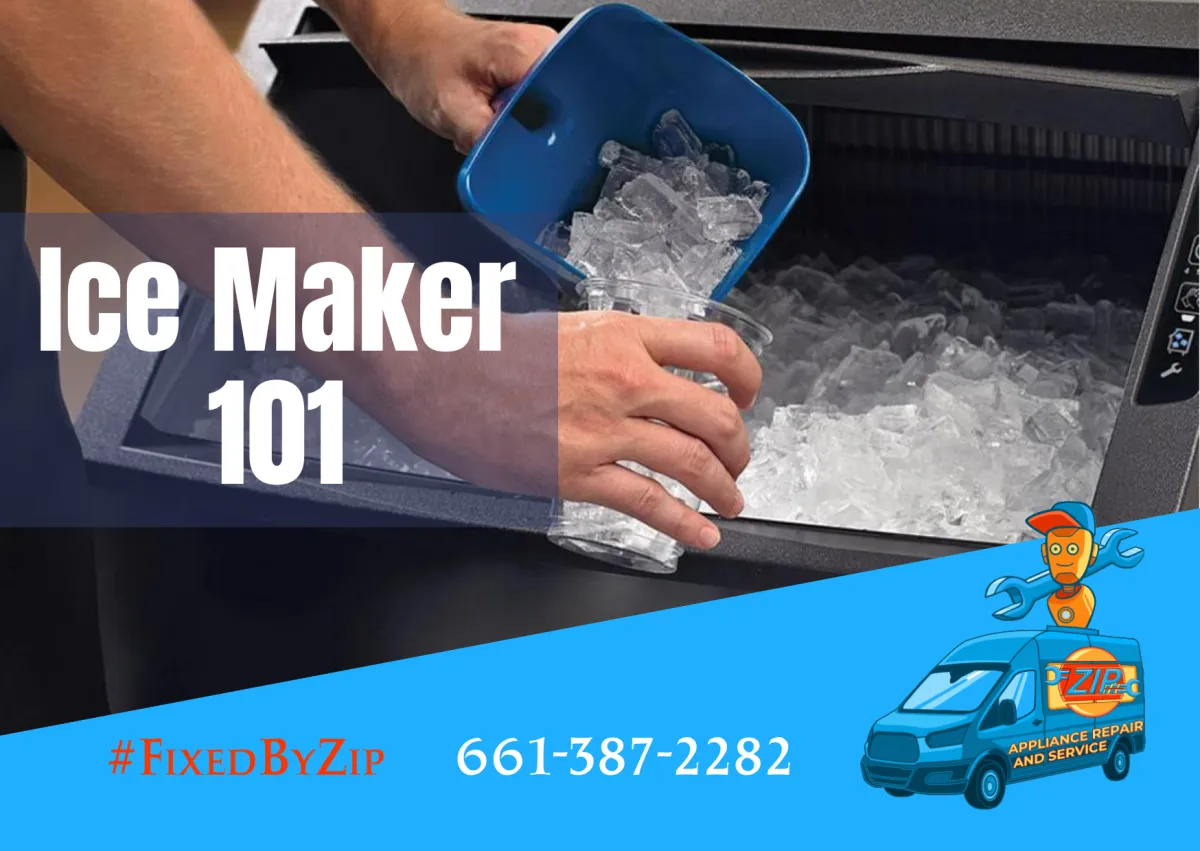
Welcome to 'Ice Machines 101: Your Ultimate Resource for Ice Machine Maintenance and Repair.' In today's fast-paced professional world, having dependable equipment is paramount to ensuring your business operates seamlessly.
Consider an ice machine, a cornerstone piece of equipment in settings like restaurants, bars, or healthcare facilities. Its ability to provide a steady supply of ice adds immense convenience and value to these establishments. However, to keep this essential equipment functioning optimally, regular maintenance and occasional repairs are necessary.
This comprehensive guide provides a wealth of information on ice machines, covering everything from the different types available to their inner workings. Most importantly, it offers invaluable insights into troubleshooting common issues and implementing effective maintenance routines. Whether you're just starting out as an ice machine owner or you've been operating one for years, this guide is indispensable for ensuring peak performance and minimizing any potential downtime.
If your ice maker is acting up, don't hesitate to reach out to Zip Appliance and Plumbing Repair at (661) 387-2282. Our team is here to help resolve any issues with your refrigerator's ice maker promptly and efficiently.
Fascinating Science: The Mechanics Behind Commercial Ice Machines
Commercial ice machines play a crucial role in keeping our drinks refreshingly cool on scorching days and are vital for maintaining food safety standards. Yet, have you ever pondered the inner workings of these machines? It's a multifaceted operation that intertwines principles from thermodynamics, refrigeration, and mechanical engineering. Fundamentally, an ice machine operates by freezing water to produce ice. However, the journey to achieve this outcome is far more intricate than one might imagine.
The Mechanism of Commercial Ice Machines
The refrigeration cycle is a fundamental process employed for cooling. Its principle lies in the fact that when a gas undergoes expansion, it cools down. Within a commercial ice machine, the refrigeration cycle serves the purpose of freezing water and transforming it into ice.
Here's how it works:
Compressor: Initially, the compressor comes into play. It pressurizes a gas known as refrigerant, elevating its temperature and pressure.
Condenser: The pressurized refrigerant then proceeds to the condenser, comprised of coils cooled by either a fan or water. As the refrigerant traverses the coils, it sheds heat and transitions back into a liquid state.
Expansion valve: Expansion Valve: Subsequently, the liquid refrigerant passes through an expansion valve, where its pressure is lowered, causing it to expand and drastically cool down.
Evaporator: The now frigid liquid refrigerant enters the evaporator, consisting of tubes enveloped by water. As it courses through the tubes, the refrigerant absorbs heat from the surrounding water, inducing freezing and the formation of ice.
Harvest cycle: Once the ice is formed, a harvest cycle initiates. Hot gas from the compressor is routed through the evaporator, warming the tubes and facilitating slight melting of the ice. Consequently, the ice detaches from the tubes and accumulates in the ice bin.
In summary, this is how the refrigeration cycle operates within a commercial ice machine. It's a sophisticated sequence involving compression, cooling, expansion, and heat absorption. Nonetheless, it culminates in the creation of the ice that enhances our beverages!
Troubleshooting Guide for Commercial Ice Machines
Commercial ice machines are essential for businesses, but they can encounter various issues that affect their performance. This comprehensive troubleshooting guide will help you diagnose and resolve common problems swiftly and effectively.
Common Issues with Commercial Ice Machines
Commercial ice machines are sophisticated pieces of equipment that can experience several common issues:
🧊Low Ice Production: This problem is often caused by factors such as a clogged water filter, malfunctioning thermostat, faulty water inlet valve, or refrigerant leaks. These issues can significantly impact the quantity of ice produced, affecting your operations.
🧊Leaking Water: Water leaks are not only a nuisance but can also indicate underlying issues with your ice machine. Loose or damaged water supply lines, clogged drain lines, faulty water inlet valves, or cracked evaporator plates are common culprits.
🧊Strange Noises: Unusual sounds emanating from your ice machine, such as banging, clunking, or humming, can be signs of trouble. These noises may indicate problems with the compressor, fan motor, or water pump, potentially leading to reduced ice production or equipment failure.
🧊Ice Quality Concerns: Cloudy, discolored, or oddly tasting ice can be unappetizing and may indicate issues such as a dirty evaporator plate, clogged water filter, or high mineral content in the water supply.
🧊Electrical Issues: Electrical problems like blown fuses, tripped breakers, or faulty wiring can disrupt the operation of your ice machine and compromise its reliability.
Regular maintenance and prompt attention to these issues are essential for ensuring the continued smooth operation of your commercial ice machine.
Troubleshooting Low Ice Production
If you're experiencing low ice production with your commercial ice machine, follow these steps to troubleshoot the issue:
🧊Check Water Supply: Ensure that the water supply valve is fully open and that there are no obstructions in the water supply line.
🧊Inspect Water Filter: A clogged water filter can restrict water flow to the ice machine, leading to reduced ice production. If the filter is dirty, replace it according to the manufacturer's instructions.
🧊Clean Evaporator Plate: The evaporator plate can accumulate mineral deposits over time, hindering ice production. Clean the plate using a solution of warm water and ice machine cleaner.
🧊Clean Condenser Coil: A dirty or clogged condenser coil can impair the ice machine's efficiency. Follow the manufacturer's instructions to clean the coil thoroughly.
🧊Verify Thermostat Settings: Ensure that the thermostat is set to the correct temperature for ice production. If the thermostat is malfunctioning, replace it as necessary.
🧊Check Refrigerant Level: Low refrigerant levels can impair the ice machine's cooling capacity. Contact a qualified technician to check and refill the refrigerant as needed.
🧊Inspect Water Inlet Valve: A faulty water inlet valve can restrict water flow to the ice machine. If the valve is malfunctioning, replace it according to the manufacturer's instructions.
By following these steps, you can identify and address the underlying issues causing low ice production in your commercial ice machine.
Troubleshooting Water Leaks
Water leaks from your commercial ice machine can indicate various issues that require attention. Follow these steps to troubleshoot and resolve water leaks effectively:
🧊Turn Off Machine: Before starting any troubleshooting or repair work, ensure the machine is turned off and disconnected from the power supply to prevent accidents.
🧊Inspect Water Supply Line: Check the water supply line for any visible signs of damage, such as cracks, breaks, or loose connections. Tighten any loose connections or replace damaged parts as needed.
🧊Check Drain Line: A clogged or damaged drain line can cause water to back up and leak from the ice machine. Inspect the drain line for any obstructions or damage, and clean or replace it as necessary.
🧊Inspect Water Inlet Valve: A faulty water inlet valve can cause water to leak from the ice machine. Check the valve for any damage or signs of wear, and replace it if necessary.
🧊Check Evaporator Plate: Inspect the evaporator plate for any cracks or corrosion that could be causing water leakage. If damage is found, replace the evaporator plate to prevent further leaks.
🧊Inspect Water Pump: Test the water pump according to the manufacturer's instructions to ensure it is functioning properly. If the pump is malfunctioning, replace it to prevent water leaks.
🧊Ensure Level Machine: Check the level of the ice machine using a level tool. If the machine is not level, adjust the feet or shim the machine as needed to prevent water leaks.
Addressing these potential causes of water leaks promptly can prevent damage to your ice machine and ensure uninterrupted operation.
Troubleshooting Strange Noises
Strange noises coming from your commercial ice machine can be indicative of underlying issues that require attention. Follow these steps to troubleshoot and resolve strange noises effectively:
🧊Turn Off Machine: Before attempting any troubleshooting or repair work, ensure the machine is turned off and disconnected from the power supply for safety.
🧊Inspect Fan Blades: Check the fan blades for any signs of damage or wear, such as chips, cracks, or warping. Replace any damaged fan blades to eliminate noise.
🧊Check Motor Bearings: Worn or damaged motor bearings can cause strange noises to emanate from the ice machine. Inspect the bearings for any signs of wear or damage, and replace them if necessary.
🧊Check Evaporator Plate: A loose or damaged evaporator plate can cause rattling or banging noises. Inspect the plate for any signs of damage, and tighten or replace it as needed.
🧊Check Water Supply Line: A loose or damaged water supply line can cause rattling or banging noises. Check the line for any visible damage, and tighten or replace it as needed.
🧊Check Compressor: A faulty or failing compressor can cause a variety of strange noises. Check the compressor for any signs of damage, such as leaks or dents, and replace it if necessary.
🧊Inspect Condenser Fan Motor: A worn or damaged condenser fan motor can cause strange noises to come from the ice machine. Inspect the motor for any signs of damage or wear, and replace it if necessary.
By systematically checking these components and addressing any issues found, you can eliminate strange noises and ensure the smooth operation of your commercial ice machine.
Troubleshooting Ice Quality Issues
Issues with ice quality can affect the overall customer experience and satisfaction. Follow these steps to troubleshoot and resolve ice quality issues effectively:
🧊Check Water Quality: Poor water quality can affect the taste and clarity of ice. Ensure that the water source is clean and free of impurities, and consider using a water filtration system if necessary.
🧊Verify Water Pressure: Low water pressure can impact the ice machine's performance and ice quality. Check the water pressure and adjust it to the manufacturer's recommended level if necessary.
🧊Clean Evaporator Plate: A dirty or damaged evaporator plate can affect ice quality. Clean the plate using a solution of warm water and ice machine cleaner, and replace it if necessary.
🧊Clean Condenser Coil: A dirty or clogged condenser coil can affect the ice machine's efficiency and ice quality. Clean the coil according to the manufacturer's instructions.
🧊Verify Thermostat Settings: Ensure that the thermostat is set to the correct temperature for producing high-quality ice. Adjust the thermostat if necessary, or replace it if it is malfunctioning.
🧊Adjust Ice Thickness: If the ice cubes are too thin or too thick, it can affect ice quality. Adjust the ice thickness according to the manufacturer's instructions to produce consistent, high-quality ice.
🧊Inspect Water Distribution System: A malfunctioning water distribution system can cause uneven ice cube formation and affect ice quality. Inspect the system for any damage or obstructions, and replace or repair any faulty parts as necessary.
By following these steps and addressing any issues found, you can ensure that your commercial ice machine produces high-quality ice consistently.
Troubleshooting Electrical Issues
Electrical issues can disrupt the operation of your commercial ice machine and compromise its reliability. Follow these steps to troubleshoot and resolve electrical issues effectively:
🧊Check Power Supply: Make sure that the ice machine is plugged in and that the power outlet is functioning properly. If the power supply is the issue, try plugging the machine into a different outlet or circuit.
🧊Inspect Circuit Breaker or Fuse: If the ice machine is not receiving power, check the circuit breaker or fuse box to ensure that the circuit hasn't tripped or the fuse hasn't blown. Reset the circuit breaker or replace the fuse as needed.
🧊Examine Power Cord: Check the power cord for any visible damage, such as cuts or frayed wires. If the cord is damaged, replace it according to the manufacturer's instructions.
🧊Check Control Board: The control board manages the electrical functions of the ice machine. If the control board is malfunctioning, it can cause electrical issues. Inspect the board for any visible damage or signs of wear, and replace it if necessary.
🧊Test Electrical Components: Use a multimeter to test the electrical components, such as the compressor, fan motor, and condenser. If any of these components are not functioning properly, replace them according to the manufacturer's instructions.
🧊Inspect Wiring: Inspect the wiring for any visible damage or loose connections. If the wiring is damaged or loose, repair or replace it as needed.
🧊Consult Qualified Technician: If you are unable to diagnose the electrical issue or if you are uncomfortable working with electricity, contact a qualified technician to diagnose and repair the problem.
By following these steps and addressing any electrical issues promptly, you can ensure the continued reliable operation of your commercial ice machine.
At Zip Appliance and Plumbing Repair, we're dedicated to ensuring your ice machines run smoothly. Contact us for expert maintenance and repair services!
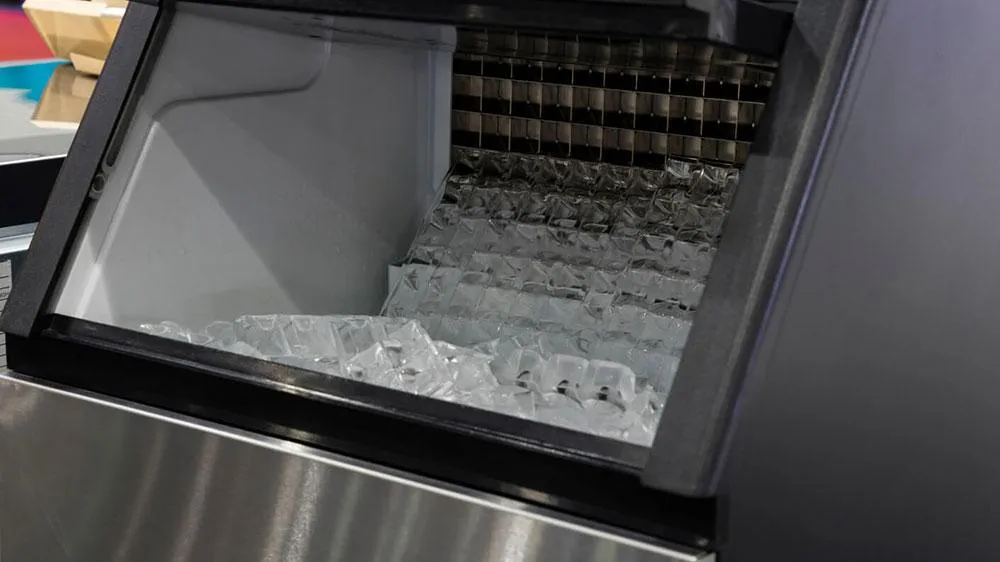
Optimal Techniques for Prolonging the Lifespan of Your Commercial Ice Machine
Commercial ice machines serve as dependable sources of ice for beverages, food preservation, and displays. Yet, to maintain peak performance, these machines necessitate regular upkeep. Failure to adhere to maintenance protocols can result in diminished efficiency, escalated energy expenditures, and even bacterial proliferation within the ice. In this segment, we'll delve into comprehensive maintenance guidelines. Whether you're a restaurateur, bar proprietor, or caterer, continue reading to discover how to uphold the smooth operation of your ice machine while ensuring the cleanliness and safety of your ice.
The Essential Ice Machine Maintenance Protocol
Empty the Ice Machine: Before commencing the cleaning regimen, ensure the machine is devoid of ice. Remove or discard any remaining cubes to prevent contamination of the cleaning solution.
Cleanse the Water System: Consult your machine's user manual for detailed instructions on purifying the water system. A critical step in this process involves flushing the water system and circulating ice machine cleaning solution to eliminate any accrued contaminants. A pristine water system significantly enhances machine efficiency and ice production.
Monitor and Replace Water Filters: Regularly inspect and replace water filters as required. Water filters play a pivotal role in producing high-quality ice and preserving machine performance.
Assess Water Filtration System and Water Pressure: Survey the water filtration system to identify and rectify any blockages or impediments that may induce a decline in water pressure.
Scrutinize Machine Components: Conduct a meticulous visual examination of all commercial ice machine components to ascertain proper functionality. This inspection encompasses a thorough assessment of the evaporator, water sensors, cube sizing controls, water distributor parts, thermistors, water hoses, water sump or reservoir, and water valve.
Sanitize All Components: Adhere to the manufacturer's guidelines to sanitize the entire machine, encompassing the dispenser and storage bin. This step is imperative for thwarting bacterial proliferation and safeguarding ice purity. Removable components are prone to harboring mold and scale, compromising ice quality and potentially posing health hazards. To ensure thorough cleansing, detach and clean these parts separately from the machine.
Reassemble and Test the Ice Machine: Once all removable components have undergone rigorous cleaning, rinse them with clean water and dry them thoroughly with a clean towel. It's crucial to ensure complete dryness before reassembling the ice machine, as residual moisture can foster mold and bacteria growth. Upon completing the cleaning and sanitization process, reposition the components and observe two cycles. Discard the initial batch of ice to confirm its freedom from cleaning solutions or contaminants.
The Definitive Ice Machine Maintenance Regimen
Establishing a maintenance schedule for your commercial ice machine is paramount to maintaining peak performance, preventing malfunctions, and extending the equipment's lifespan. Below is a suggested schedule designed to streamline cleaning efforts:
Daily:
🧊Monitor the ice bin level and adjust machine production accordingly.
🧊Inspect the machine's exterior for any indications of damage, corrosion, or leaks.🧊Sanitize the ice machine components as per the manufacturer's guidelines.
🧊Dispose of ice that has been in the bin for over 24 hours.
Weekly:
🧊Remove and clean the machine's air filter.
🧊Inspect and clean the condenser coil.
🧊Check the water filter and replace if necessary.
🧊Inspect and clean the water distribution system.
🧊Examine the evaporator and remove any visible scale buildup.
Monthly: Schedule a professional technician to conduct a comprehensive inspection of the machine.
🧊Perform a thorough deep clean of the machine, addressing all internal and external components.
🧊Inspect and clean the drain system and drip tray.
🧊Check the door gasket for signs of damage or wear, and clean if required.
Quarterly: Arrange for a professional technician to perform a comprehensive inspection of the machine.
🧊Verify refrigerant levels and make adjustments if needed.
🧊Test and adjust the bin control system if necessary.
🧊Inspect electrical connections.
🧊Examine the water inlet valve and clean if necessary.
Annually: Engage a professional technician for a comprehensive inspection of the machine.
🧊Clean and inspect the compressor.
🧊Check the fan motor and blades, and clean if needed.
🧊Inspect the ice thickness sensor and clean if required.
🧊Verify the harvest cycle and make adjustments if necessary.
By adhering to this maintenance schedule, you can ensure that your commercial ice machine consistently operates at its best and produces high-quality ice.
Always refer to the manufacturer's instructions and seek professional assistance when needed. Proper maintenance is crucial for preserving the longevity and performance of your commercial ice machine.
By adopting a proactive approach to maintenance, you can prevent potential problems from escalating into major issues. This proactive stance not only saves time and money in the long term but also ensures consistent production of high-quality ice from your machine.
So, rather than waiting for issues to arise, take charge of maintenance and reap the rewards of a well-maintained commercial ice machine.

The Cooling Conclusion
By comprehending the diverse array of ice machines available, conducting routine maintenance inspections, and adeptly troubleshooting any potential issues, business proprietors can ensure optimal functionality and the consistent production of top-tier ice from their machines.
Investing in a commercial ice machine offers manifold advantages, including heightened efficiency, convenience, and cost-effectiveness. Whether managing a restaurant, hotel, or healthcare establishment, a commercial ice machine equips you to meet customer demands while enhancing your financial performance.
Should you require guidance on purchasing a commercial ice machine or assistance with maintenance and repairs, do not hesitate to reach out to a reputable supplier or technician such as Brink Inc.
With conscientious care and maintenance, your commercial ice machine is poised to deliver dependable service for years to come. We extend our gratitude for exploring the Ultimate Guide to Commercial Ice Machines, trusting it has proven informative and instrumental in your decision-making endeavors.
Zip Appliance and Plumbing Repair, based in Bakersfield, CA, is the top choice for all your ice maker repair needs.
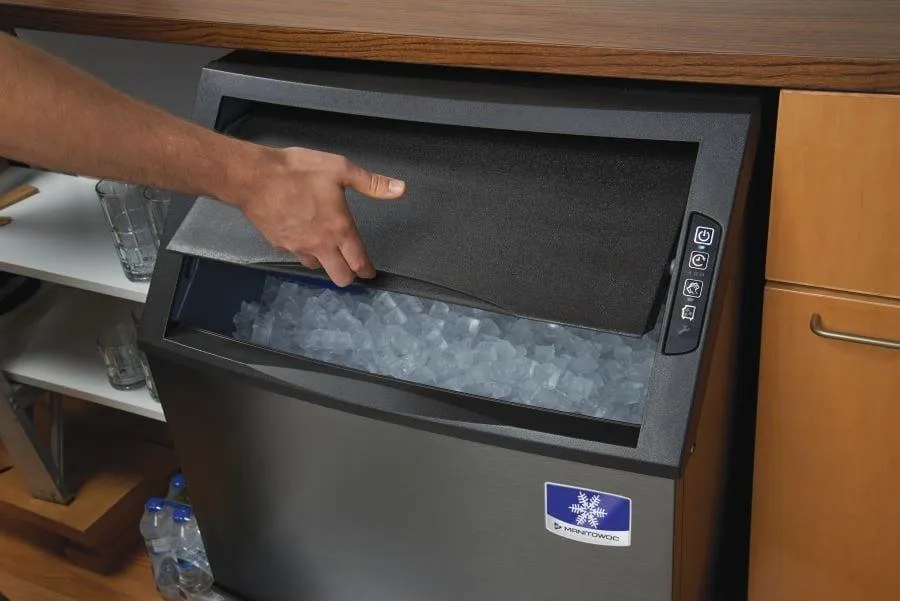
Zip Appliance and Plumbing Repair, headquartered in Bakersfield, California, is your go-to solution for all your ice maker repair needs. To schedule a repair or inquire about our services, please contact us at (661) 387-2282. Our dedicated team is ready to assist you with your refrigerator repair needs.
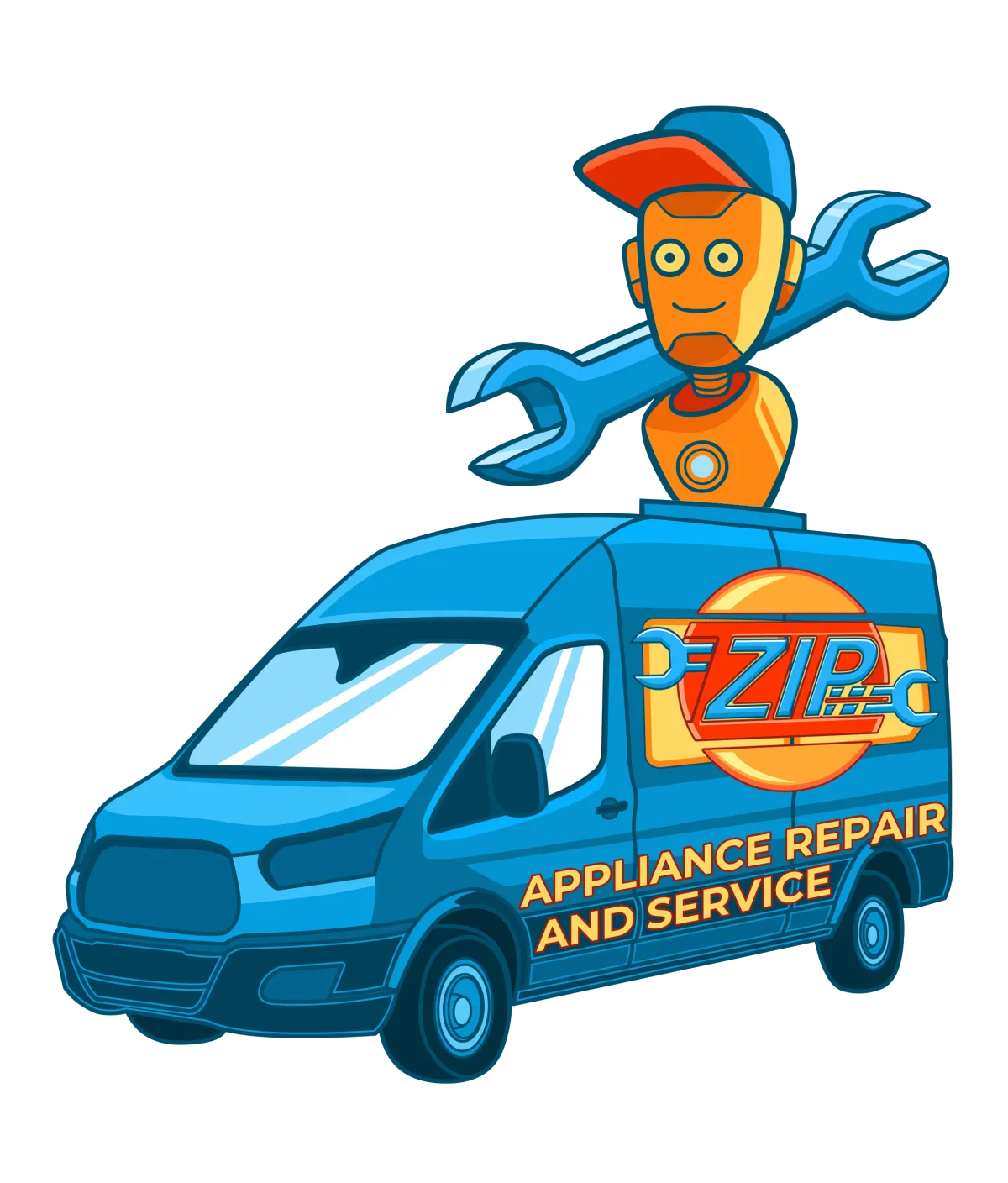
Ice Maker Repair In A Zip
If you need a Ice Maker Repair call our Team at (661) 387-2282, or visit our online scheduling page to request service.
Appliance Repair
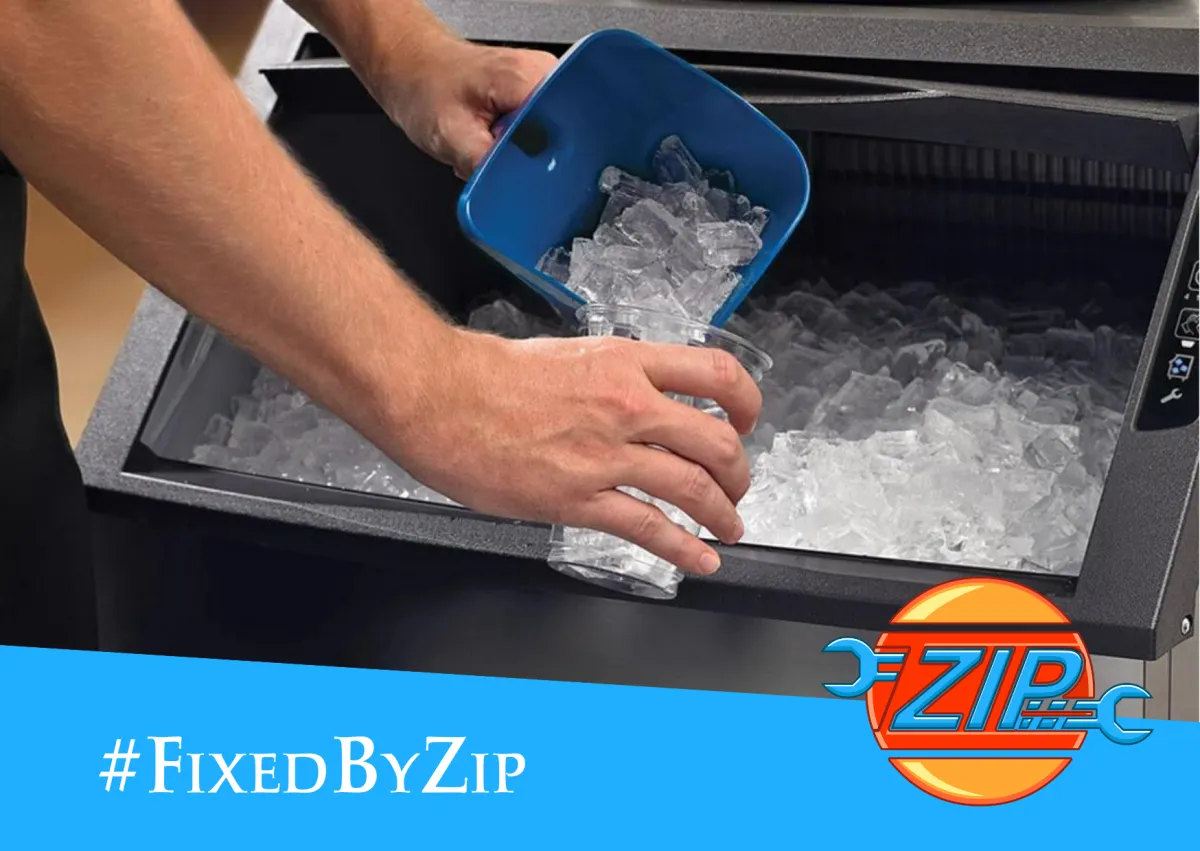
HAVE A QUESTION, CALL (661) 387-2282

Online Offers
Take advantage of our online discount offers - save time and money...

Residential & Commercial appliances
See what our company can do for you

Appliance Repair Tips
If your appliance is not working properly...
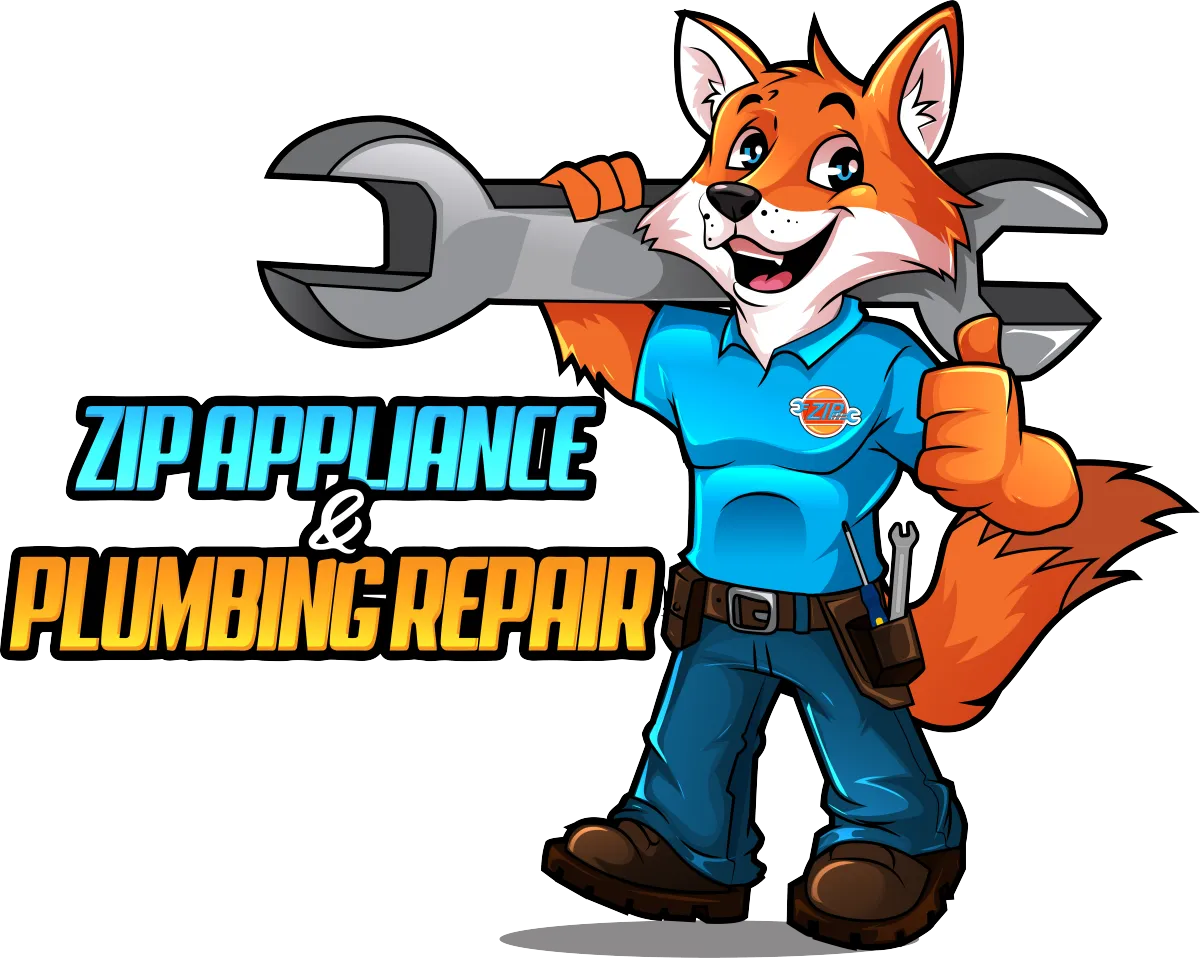
1405 Commercial Way ste 100
Bakersfield, CA 93309
Lic # 1116346
Equipment We Sevice
- A Call To Confirm Your Appointment Time
- A Email Detailing Your Assigned Technician
- Information Needed Before The Repair Can Be Started
- An Estimate Of Work To Be Done
© 2025 ZIP APPLIANCE REPAIR & SERVICE







